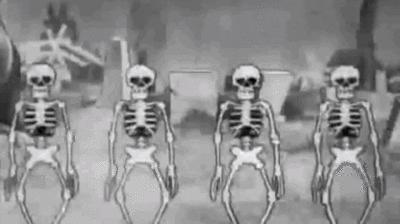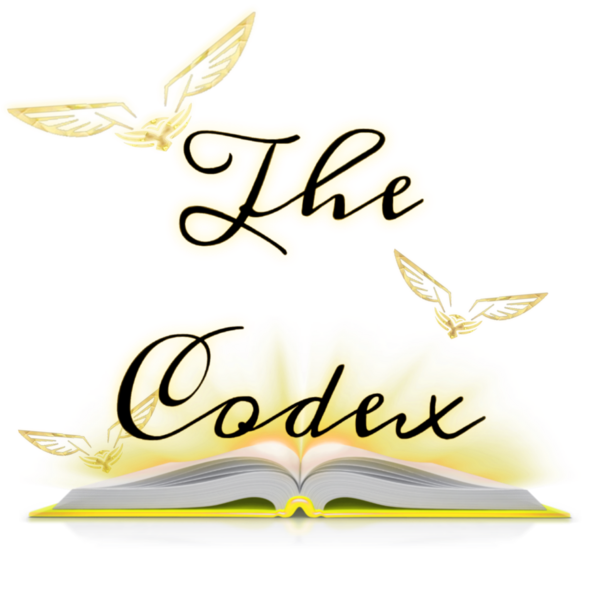
The official discord link if you wish to join the discord: https://discord.gg/j5RKwCvAFu
Support the wiki on our official Ko-Fi page or Patreon page!
Undead Physiology: Difference between revisions
From The Codex
| (18 intermediate revisions by 4 users not shown) | |||
| Line 1: | Line 1: | ||
[[File:4343534giphy_(1).gif| | <tabber> | ||
|-|Skeletons=[[File:4343534giphy_(1).gif|center|400px]] | |||
|-|Zombie=[[File:Tattoogirl.gif|center|400px]] | |||
</tabber> | |||
== | == Background == | ||
'''Undead Physiology''' is the ability to either be or transform into undead beings from mythology, legend, or fiction—entities that are deceased yet continue to function as though alive. These beings, often reanimated corpses, are usually brought back to life through supernatural forces or by channeling the life force of others (e.g., demons). Common examples include zombies, skeletons, and other similar creatures. Undead beings are typically immune to conventional methods of death, though they may face issues like decay or unique vulnerabilities. | |||
== | == Capabilities == | ||
Users with this ability gain the traits of the undead, such as resilience to harm, immunity to basic biological needs, and resistance to many external factors like poisons or diseases. Depending on the type of undead physiology, users may also gain access to supernatural abilities, including regeneration, incorporeality, or necromantic powers. | |||
*[[ | == Applications == | ||
* '''[[Self-Sustenance]]''': Undead do not require food, water, air, or sleep to survive. | |||
* '''[[Supernatural Resilience]]''': Enhanced durability and survivability beyond what living beings can endure. | |||
* '''[[Regeneration]]''': The ability to recover from injuries or reassemble body parts (ranges from Low-Mid to Low-Godly in some cases). | |||
* '''[[Necromancy]]''': Certain undead beings can control or summon other undead entities. | |||
* '''Incorporeality''': Ghost-like beings may phase through physical objects and attacks. | |||
* '''Enhanced Strength''': Many undead possess greater-than-average physical strength. | |||
* '''Undying Nature''': The user may not age or decay unless targeted by specific weaknesses. | |||
*[[ | == Variations == | ||
* '''[[Zombie Physiology]]''': Users resemble zombies, often possessing great physical strength but lacking intelligence or agility. | |||
* '''[[Vampire Physiology]]''': Users exhibit traits of vampires, such as enhanced speed, strength, and blood-drinking abilities. | |||
* '''Lich Physiology''': Users possess the traits of liches, gaining immense magical abilities and longevity. | |||
* '''Ghost Physiology''': Users become incorporeal spirits, able to phase through objects and possess others. | |||
* '''Skeleton Physiology''': Users manifest as sentient skeletons, often immune to physical harm due to their lack of flesh and organs. | |||
==Resistances== | == Resistances == | ||
*[[Resistance]] to [[Poison Manipulation | * '''[[Resistance]] to [[Poison Manipulation]]''': Immune to poisons due to inactive biological systems. | ||
* '''[[Resistance]] to [[Biological Manipulation]]''': Immune to abilities targeting living biological functions. | |||
* '''[[Resistance]] to [[Disease Manipulation]]''': Unable to contract diseases as biological systems are nonfunctional or nonexistent. | |||
* '''[[Resistance]] to [[Death Manipulation]]''': As the user is already dead, death-based abilities have no effect. | |||
* '''[[Resistance]] to [[Blood Manipulation]]''': Beings without blood, such as skeletons or ghosts, are unaffected by blood-based powers. | |||
* '''[[Resistance]] to [[Age Manipulation]]''': Entities like ghosts or liches remain unaffected by aging due to their undead nature. | |||
* '''[[Resistance]] to [[Martial Arts|Physical Attacks]]''': Non-corporeal undead, such as ghosts, cannot be harmed physically. | |||
* '''[[Resistance]] to [[Mind Manipulation]]''': Mindless undead or beings with non-functional brains are unaffected by mental attacks. | |||
* '''[[Resistance]] to [[Pain Manipulation]]''': Many undead beings, like zombies or skeletons, do not feel pain due to their lack of sensory organs or nerves. | |||
*[[ | == Possible Limitations == | ||
* Many undead beings lack intelligence, making them mindless and easily controlled or manipulated. | |||
* Some undead beings require sustenance, such as consuming flesh or blood, to maintain their form or power. | |||
* Zombies and similar beings are often destroyed by brain damage or fire. | |||
* Vulnerabilities to specific abilities, such as [[Holy Manipulation]] or [[Light Manipulation]], may exist. | |||
* Ghosts and incorporeal undead may be unable to physically interact with their environment. | |||
* Decay and decomposition may weaken certain undead beings over time. | |||
*[[ | == Known Users == | ||
* '''[[The Snatcher]]''' '''[[A Hat in Time|(A Hat in Time)]]''' | |||
* '''[[Skeleton King]]''' '''[[Clash Royale|(Clash Royale)]]''' | |||
* '''[[Lord Harkon]]''' '''[[The Elder Scrolls|(The Elder Scrolls)]]''' | |||
* '''[[The Lich]]''' '''[[Adventure Time|(Adventure Time)]]''' | |||
* '''[[Dracula]]''' '''[[Castlevania|(Castlevania)]]''' | |||
*[[ | == Notes == | ||
* It must be demonstrated in a specific verse that an undead being possesses abilities like regeneration or [[Supernatural Resilience]]; otherwise, these abilities are not assumed by default. | |||
* While undead beings are commonly associated with immortality, they often have specific weaknesses that make them vulnerable. | |||
[[Category:Powers and Techniques]] | |||
[[Category:Physiologies]] | |||
[[Category:Powers and | |||
[[Category: | |||
Latest revision as of 05:42, 14 January 2025
Background
Undead Physiology is the ability to either be or transform into undead beings from mythology, legend, or fiction—entities that are deceased yet continue to function as though alive. These beings, often reanimated corpses, are usually brought back to life through supernatural forces or by channeling the life force of others (e.g., demons). Common examples include zombies, skeletons, and other similar creatures. Undead beings are typically immune to conventional methods of death, though they may face issues like decay or unique vulnerabilities.
Capabilities
Users with this ability gain the traits of the undead, such as resilience to harm, immunity to basic biological needs, and resistance to many external factors like poisons or diseases. Depending on the type of undead physiology, users may also gain access to supernatural abilities, including regeneration, incorporeality, or necromantic powers.
Applications
- Self-Sustenance: Undead do not require food, water, air, or sleep to survive.
- Supernatural Resilience: Enhanced durability and survivability beyond what living beings can endure.
- Regeneration: The ability to recover from injuries or reassemble body parts (ranges from Low-Mid to Low-Godly in some cases).
- Necromancy: Certain undead beings can control or summon other undead entities.
- Incorporeality: Ghost-like beings may phase through physical objects and attacks.
- Enhanced Strength: Many undead possess greater-than-average physical strength.
- Undying Nature: The user may not age or decay unless targeted by specific weaknesses.
Variations
- Zombie Physiology: Users resemble zombies, often possessing great physical strength but lacking intelligence or agility.
- Vampire Physiology: Users exhibit traits of vampires, such as enhanced speed, strength, and blood-drinking abilities.
- Lich Physiology: Users possess the traits of liches, gaining immense magical abilities and longevity.
- Ghost Physiology: Users become incorporeal spirits, able to phase through objects and possess others.
- Skeleton Physiology: Users manifest as sentient skeletons, often immune to physical harm due to their lack of flesh and organs.
Resistances
- Resistance to Poison Manipulation: Immune to poisons due to inactive biological systems.
- Resistance to Biological Manipulation: Immune to abilities targeting living biological functions.
- Resistance to Disease Manipulation: Unable to contract diseases as biological systems are nonfunctional or nonexistent.
- Resistance to Death Manipulation: As the user is already dead, death-based abilities have no effect.
- Resistance to Blood Manipulation: Beings without blood, such as skeletons or ghosts, are unaffected by blood-based powers.
- Resistance to Age Manipulation: Entities like ghosts or liches remain unaffected by aging due to their undead nature.
- Resistance to Physical Attacks: Non-corporeal undead, such as ghosts, cannot be harmed physically.
- Resistance to Mind Manipulation: Mindless undead or beings with non-functional brains are unaffected by mental attacks.
- Resistance to Pain Manipulation: Many undead beings, like zombies or skeletons, do not feel pain due to their lack of sensory organs or nerves.
Possible Limitations
- Many undead beings lack intelligence, making them mindless and easily controlled or manipulated.
- Some undead beings require sustenance, such as consuming flesh or blood, to maintain their form or power.
- Zombies and similar beings are often destroyed by brain damage or fire.
- Vulnerabilities to specific abilities, such as Holy Manipulation or Light Manipulation, may exist.
- Ghosts and incorporeal undead may be unable to physically interact with their environment.
- Decay and decomposition may weaken certain undead beings over time.
Known Users
- The Snatcher (A Hat in Time)
- Skeleton King (Clash Royale)
- Lord Harkon (The Elder Scrolls)
- The Lich (Adventure Time)
- Dracula (Castlevania)
Notes
- It must be demonstrated in a specific verse that an undead being possesses abilities like regeneration or Supernatural Resilience; otherwise, these abilities are not assumed by default.
- While undead beings are commonly associated with immortality, they often have specific weaknesses that make them vulnerable.

